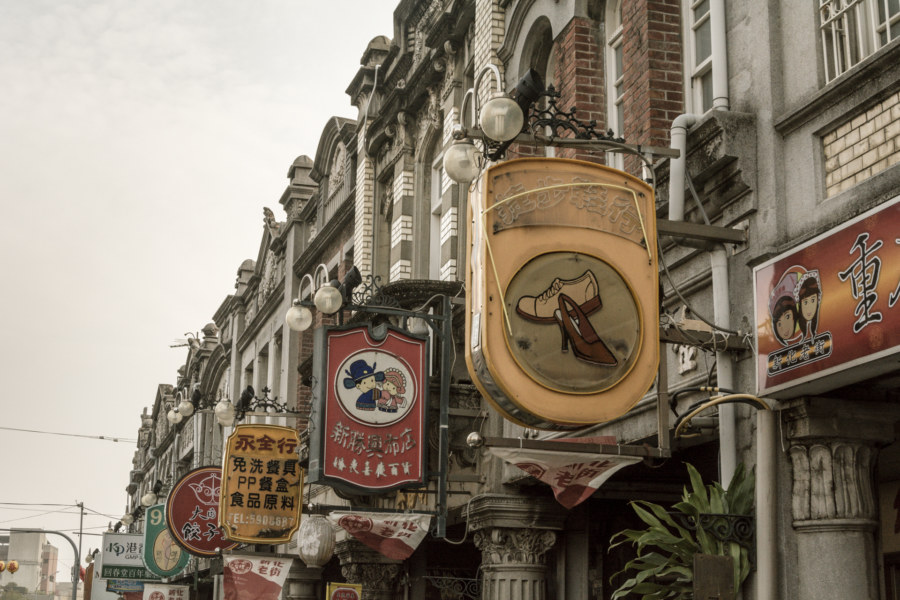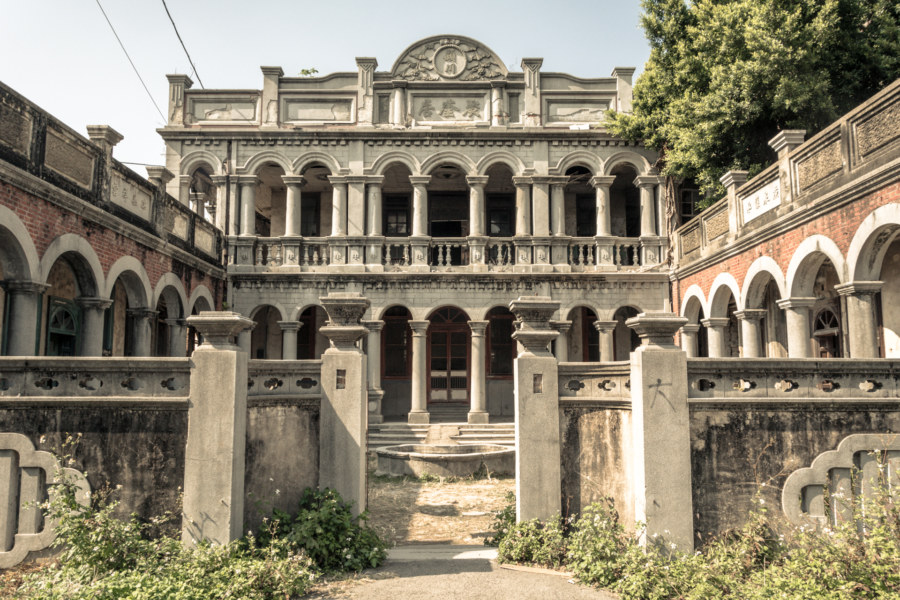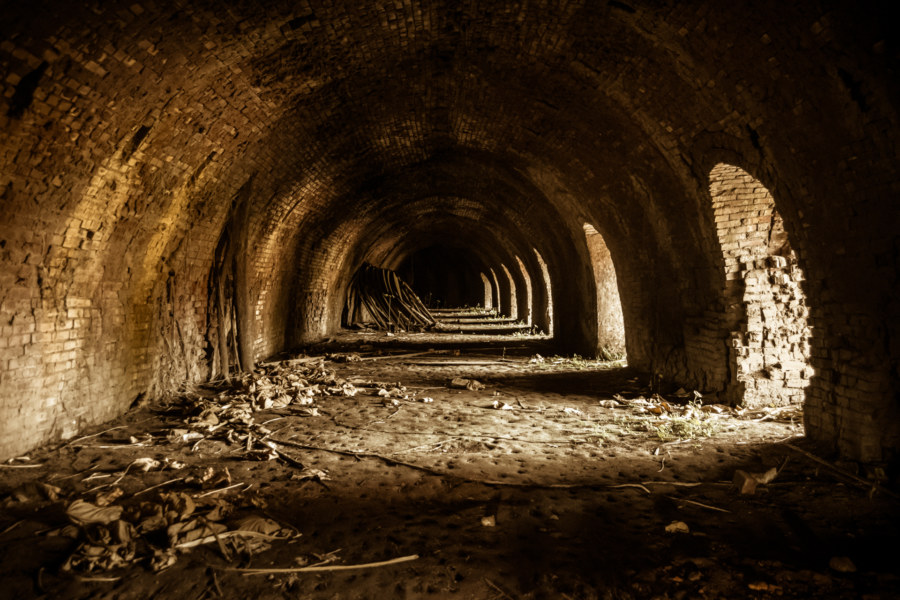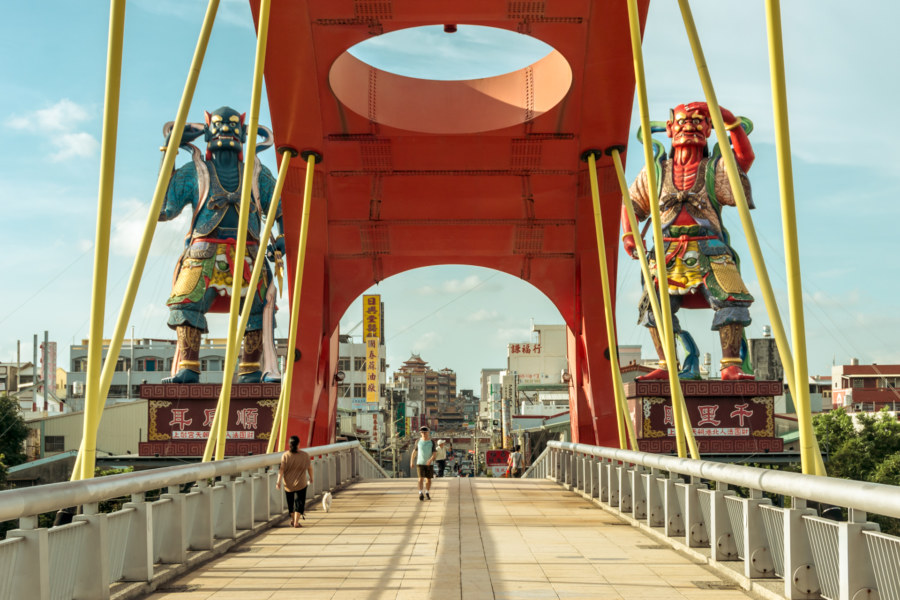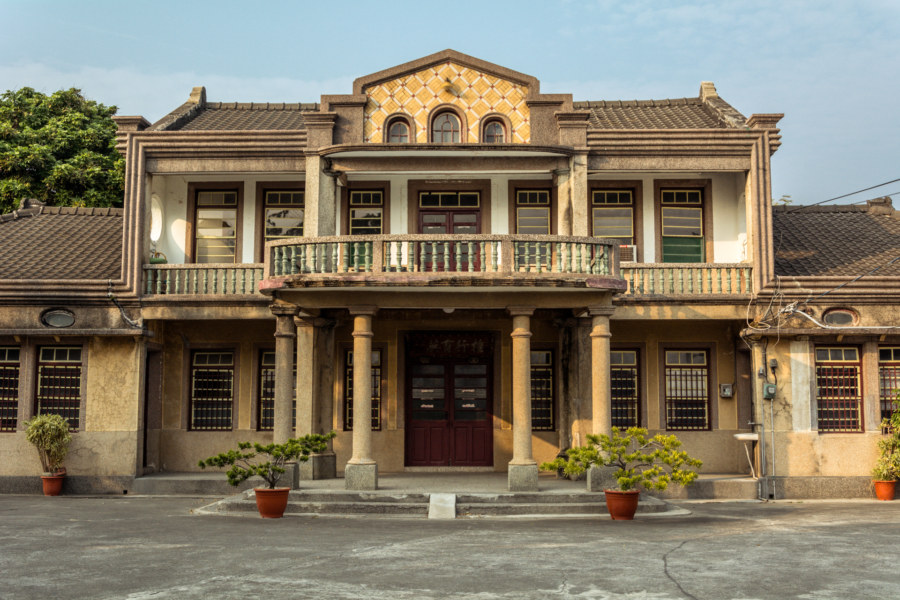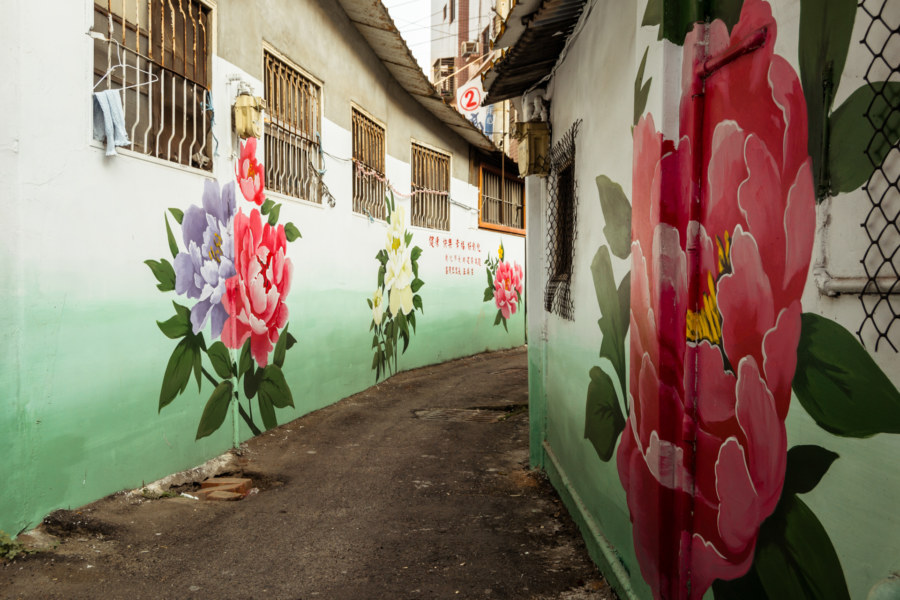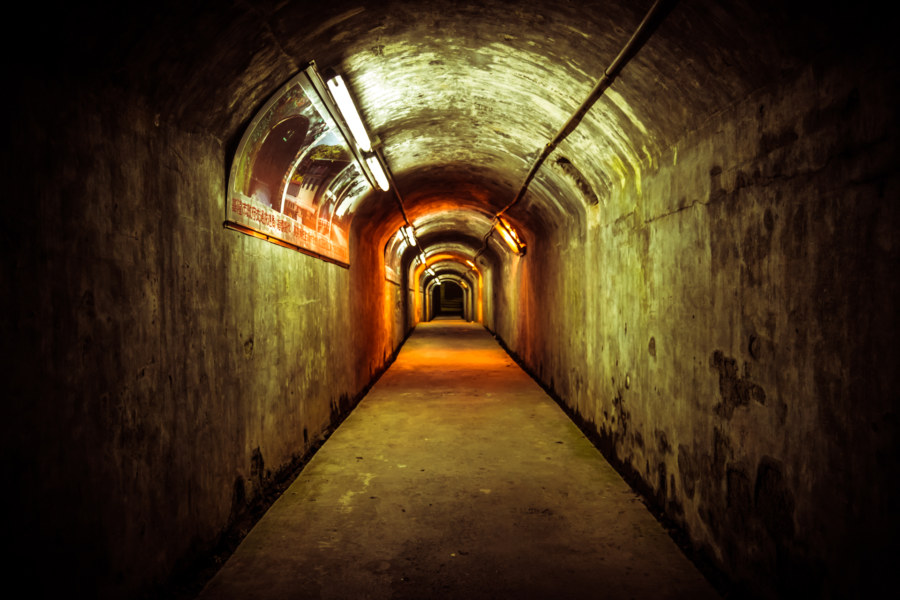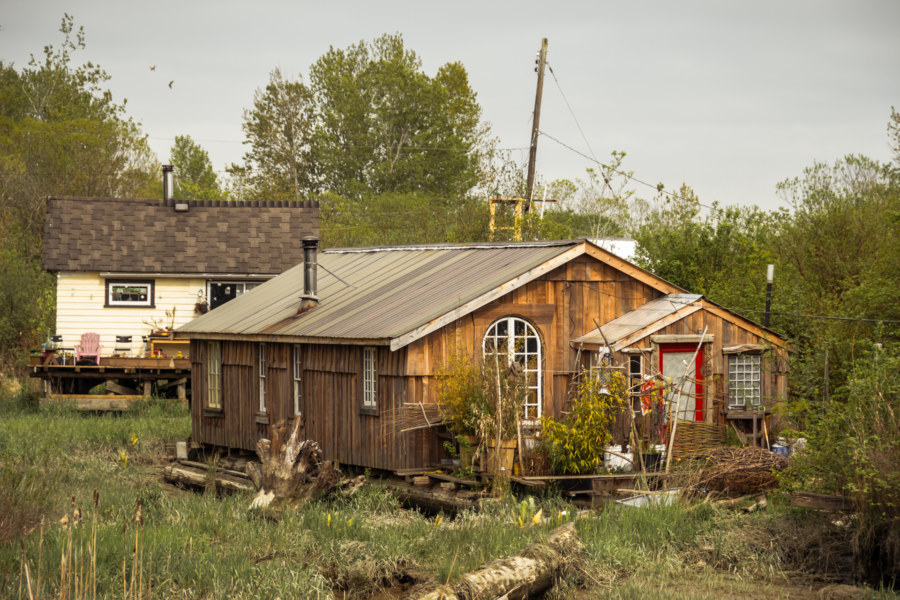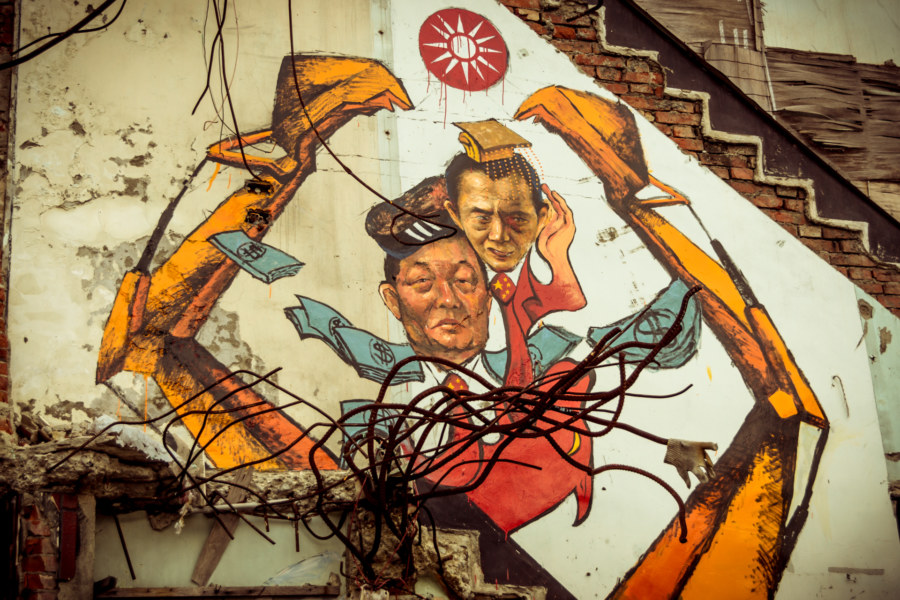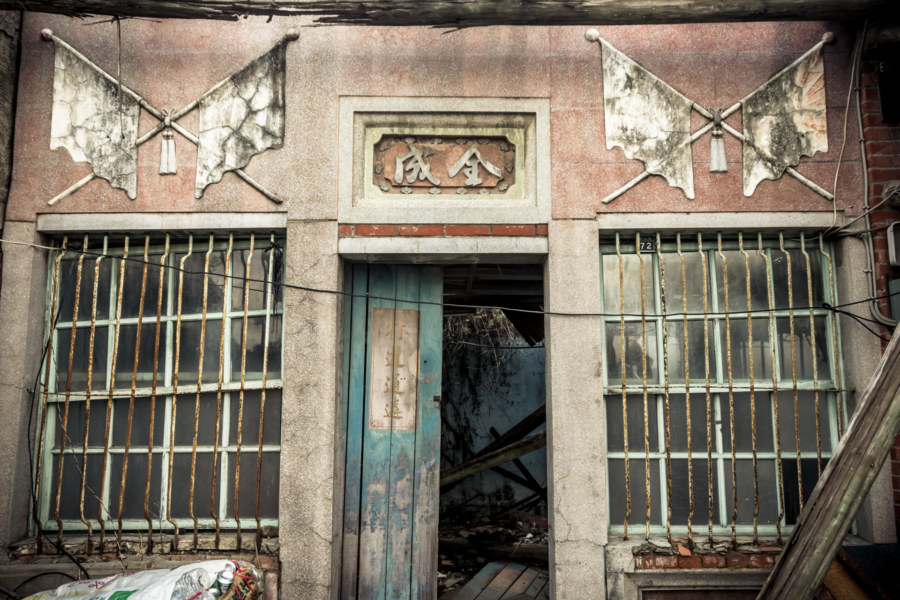Xinhua Old Street 新化老街 is one of the finest old streets in all Taiwan. Located in Xinhua, Tainan, the street is lined baroque revival and art deco buildings from the Japanese colonial era. Most of the buildings on the western side of the street date back to the 1920s whereas the eastern side features a more modernist style from the late 1930s.
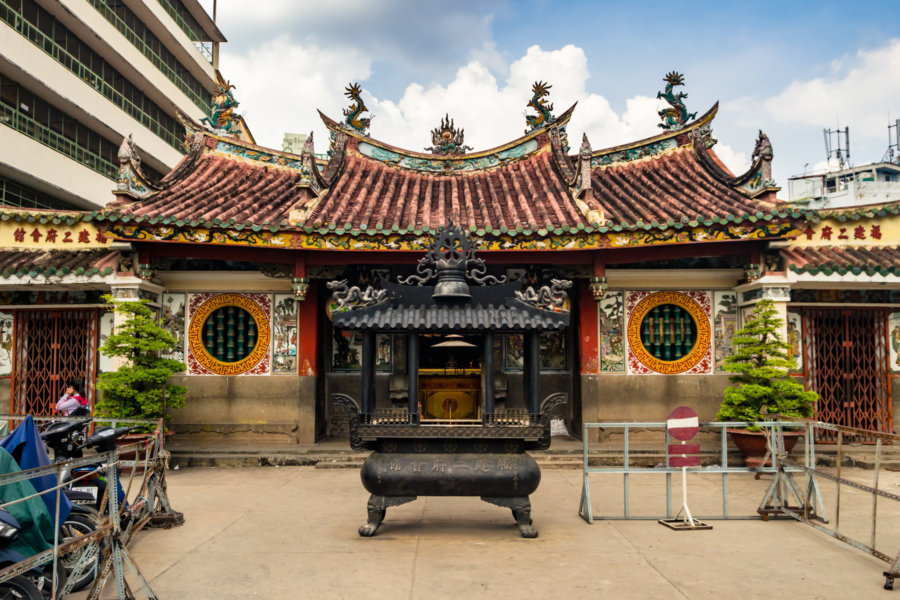
Posts with a historical angle, situating content in time and space. Here we go deeper into the past…
Jukuiju 聚奎居
Jùkuíjū 聚奎居 is an abandoned mansion in Wuri, Taichung, built in 1920 by Chén Shàozōng 陳紹宗, a wealthy businessman and landowner. The architecture is a combination of the traditional Taiwanese sānhéyuàn 三合院 (a U-shaped building with three parts surrounding a central courtyard) and the Baroque Revival style of the Japanese colonial era. It is located on the rundown, industrial margins of the city, along an otherwise unremarkable lane next to a military base, looking completely out of place in space and time.
Jinshuncheng Hoffmann Kiln 金順成八卦窯
Jīnshùnchéng Hoffmann Kiln 金順成八卦窯 is located on the eastern Changhua Plain 彰化平原 in Huatan, a rural township south of Changhua City. During the Japanese colonial era this part of Taiwan specialized in brick and ceramic production due to plentiful supplies of high-quality clay, and the industry continued to expand after the arrival of the KMT. This particular kiln only dates back to the early 1960s and is the last of its kind in Changhua. For that reason the county government designated it a historic building in 2010 but very little has been done to clean the site and make it inviting to visitors.
Postcards From Beigang 北港明信片
Beigang is a historic town on the riverside border between Yunlin and Chiayi in southern Taiwan. I made a brief, unplanned stopover in Beigang while riding north to Changhua in the summer of 2014. I was only vaguely aware of Beigang’s existence, having at some point read something about Cháotiān Temple 朝天宫, one of Taiwan’s most famous Mazu 媽祖 temples, but I had a hunch that there might be more to see—and I was right! If you enjoy visiting traditional towns with a lot of history then Beigang should definitely be on your list.
Huang Sanyuan Residence 黃三元故居
Huáng Sānyuán Residence (黃三元故居) is a beautiful Western-style house located along a country road in Puxin, a rural township in the heart of Changhua, Taiwan. It was built in 1940 by Huáng Yì 黃義, a wealthy employee (and presumably an executive) of the Japanese colonial era Taiwan Sugar Company (台糖公司). If this government source is to be believed Huang Yi had five wives who bore him five sons—and some unknown number of daughters. No wonder he needed such a large house!
Postcards From Changhua City 1 彰化市明信片一號
I moved to Changhua City in November 2014 to see what it’s like living in a traditional town in central Taiwan. I had an interesting time staying in Tainan for three months earlier that year so I figured why not give Changhua a shot for the wintertime? Changhua is nowhere near as lively and interesting as Taiwan’s old southern capital but it is not without charm. Here I have gathered up some of the more representative images I captured during my first two months of residency, mostly of the area immediately to the east of the train station, which also happens to be the oldest part of town. Explanations are given in the caption of each photo, where available.
100-Year-Old Bomb Shelter 百年防空洞
I found myself in the seedy port town of Keelung near the end of my round-the-island bicycle tour of Taiwan in 2013. Later on, after dinner was done, I went out wandering the labyrinth of night—and, on the far side of the railway line near Sānkēng Station 三坑車站 I noticed the entrance to a tunnel running beneath the hillside. Curious, I hunched down (the clearance is only around 175 cm) and made my way through. A minute later I emerged on the other side, somewhat disoriented, though I quickly regained my bearings.
Finn Slough
Founded by Finnish settlers in the late 19th century, Finn Slough is a tiny fishing community located along the marshy banks of the mighty Fraser River in southern Richmond, British Columbia. In the early 20th century the settlers moved the village to its current location, a slough (swamp, pronounced “slew”) at the base of the No. 4 Road on Lulu Island east of Steveston. Most—if not all—of the buildings in Finn Slough were constructed prior to 1950, lack modern plumbing, and rely on wood-burning stoves for heating.
The Seeds of Unrest
Part of a mural by Taiwanese artist Liu Tsungjung 劉宗榮 in Dapu village.
Last night I went to Dapu Village in Zhunan, the northernmost township in Miaoli, for a concert and movie screening commemorating the treacherous demolition of four homes last year. The event took place on the former site of Chang Pharmacy, whose owner, Chang Sen-wen (張森文), was later found dead in a drainage ditch in an apparent suicide. This occurred not long after the government razed his home and business to the ground with all his possessions still inside. In a cruel twist of fate the Chang family was served a bill for demolition equalling the financial compensation offered by the government—leaving them with absolutely nothing. Eminent domain may serve the public interest in special circumstances—but this was outright robbery by the state.
The Dapu incident1, in brief: Miaoli magistrate Liú Zhènghóng (劉政鴻, pictured above, at left) ordered the expropriation of 156 hectares of land in Dapu Village in 2009, ostensibly to build a new…
Gushan Village Old Homes 姑山里老屋
I was off the main road in Gūshān Village 姑山里 in Dashu, a hilly rural district in Kaohsiung, when I noticed a row of old buildings next to a small temple. Stopping to investigate, I unslung my camera and snapped a few shots, not quite realizing what I was looking at. My mind was elsewhere—a consequence of two hard days of riding in the tropical summer sun. I was, at the time, heading south to the railway line after making it to Qishan the night before and touring through Meinong earlier in the day. Only later, when I went to develop the photos, did I notice the faint traces of the Japanese rising sun flag in the top right corner of the building pictured above. At one point these stone flags must have been painted bright red, a reflection of Japanese imperial interests in Taiwan.
